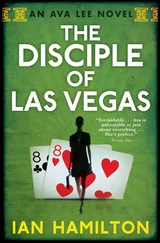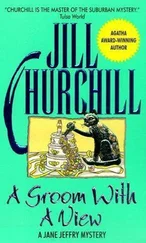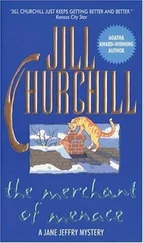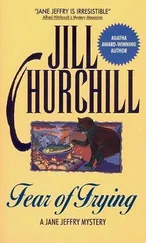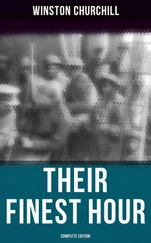Winston Churchill - Ian Hamilton's March
Здесь есть возможность читать онлайн «Winston Churchill - Ian Hamilton's March» весь текст электронной книги совершенно бесплатно (целиком полную версию без сокращений). В некоторых случаях можно слушать аудио, скачать через торрент в формате fb2 и присутствует краткое содержание. Год выпуска: 2018, Издательство: epubBooks Classics, Жанр: История, Прочая документальная литература, на английском языке. Описание произведения, (предисловие) а так же отзывы посетителей доступны на портале библиотеки ЛибКат.
- Название:Ian Hamilton's March
- Автор:
- Издательство:epubBooks Classics
- Жанр:
- Год:2018
- ISBN:нет данных
- Рейтинг книги:4 / 5. Голосов: 1
-
Избранное:Добавить в избранное
- Отзывы:
-
Ваша оценка:
- 80
- 1
- 2
- 3
- 4
- 5
Ian Hamilton's March: краткое содержание, описание и аннотация
Предлагаем к чтению аннотацию, описание, краткое содержание или предисловие (зависит от того, что написал сам автор книги «Ian Hamilton's March»). Если вы не нашли необходимую информацию о книге — напишите в комментариях, мы постараемся отыскать её.
London to Ladysmith
Ian Hamilton's March — читать онлайн бесплатно полную книгу (весь текст) целиком
Ниже представлен текст книги, разбитый по страницам. Система сохранения места последней прочитанной страницы, позволяет с удобством читать онлайн бесплатно книгу «Ian Hamilton's March», без необходимости каждый раз заново искать на чём Вы остановились. Поставьте закладку, и сможете в любой момент перейти на страницу, на которой закончили чтение.
Интервал:
Закладка:
After the Nile Expedition of 1885 had reached its sad conclusion, Hamilton returned to India and became an aide–de–camp on the staff of Lord Roberts, who was then commanding the Madras army. The question of musketry training for Infantry was at that time much discussed, and Lord Roberts was determined to do something to improve the shooting of the British army. In his book 'Forty–one Years in India' he tells us how he and his staff formed themselves into a team and had many exciting rifle matches with the regiments in the Madras command. In all this Hamilton's skill with the rifle and the keen interest he had always shown for musketry—his first regimental appointment had been to be Musketry Instructor—stood him in good stead, and when Lord Roberts became Commander–in–Chief in India his aide–de–camp, who had meanwhile served in the Burmah campaign, was made Assistant Adjutant–General for Musketry.
In 1886 he married Jean, daughter of Sir John Muir, Baronet, of Deanston, Perthshire. He had now determined to persevere in the military profession, and devoted himself to it with great assiduity. His literary talents were turned to military subjects. He published a book on musketry in the army entitled 'The Fighting of the Future.' It was strong and well written. The introduction of the magazine rifle has modified many of his conclusions, but at the time the book attracted a great deal of attention. He found time, however, to write on other things, and there are still extant from his pen: 'A Jaunt in a Junk,' an account of a cruise which he made with his brother down the west coast of India; a volume of verses, 'The Ballad of Hadji and the Boar'; and one or two other writings. He preserved and extended his acquaintance with literary men, particularly with Andrew Lang, whom he powerfully impressed, and who inscribed a volume of poems to him in the following compulsive lines:
TO COLONEL IAN HAMILTON
To you, who know the face of war,
You, that for England wander far,
You that have seen the Ghazis fly
From English lads not sworn to die,
You that have lain where, deadly chill,
The mist crept o'er the Shameful Hill,
You that have conquered, mile by mile,
The currents of unfriendly Nile,
And cheered the march, and eased the strain
When Politics made valour vain,
Ian, to you, from banks of Ken,
We send our lays of Englishmen!
After doing much useful work in the Musketry Department he became one of the Assistant Quartermaster–Generals in India. From this office he managed to sally forth to the Chitral Expedition, for his services in which on the lines of communication he was made Commander of the Bath. He next became Deputy Quartermaster–General, and it was evident that if he chose to continue to serve in India he would ultimately become the head of the Department. In 1897 the Great Frontier War broke out. Hamilton was appointed to command one of the brigades of the Tirah Expeditionary Force. He was at the time on leave in England. He returned at speed, assumed command, and led his brigade through the Kohat Pass in the first movement of the general advance. It looked as if his chance in life had come. He had a magnificent force under him. He enjoyed the confidence of the General–in–chief, Sir William Lockhart, and only a few miles away the enemy awaited the advancing army on the heights of Dargai. The next morning his horse shied suddenly. He was thrown to the ground and broke his leg. They carried the brigadier away in a doolie, his brigade passed to another, and the campaign in Tirah was fought without him.
Ian Hamilton took this bitter disappointment with philosophical composure. 'Perhaps,' he said to me one day in Calcutta, 'I should have lost my reputation had I held my command.' But it was easy to see how much he felt the lost opportunity and the enforced inaction. At length his leg was mended—after a fashion. He persuaded a medical board to pass him as sound. The campaign continued. There was, however, no vacancy at the front. For several weeks he waited. Presently Sir Bindon Blood—who was preparing for his invasion of Buner, and who knew Hamilton well—applied for him to command his lines of communication. Obstacles were, however, raised by the Indian War Office, and the proposal fell through. At last, in February, when it seemed certain that a spring campaign must be undertaken against the Afridis, Sir William Lockhart decided to replace General Kempster by some other brigadier, and Ian Hamilton was again sent to the front. The hopes or fears of a further campaign proved unfounded. The Afridis gradually paid their toll of rifles, and their jirgahs made submission. The fighting was practically over. Yet in much skirmishing as occurred while Hamilton's brigade were holding the advanced posts in the Bara valley his care and eagerness attracted attention, and, small as was his share in the campaign, Sir William Lockhart gave him an honourable mention in the despatches.
On the restoration of order along the North–West Frontier Hamilton was offered the temporary position of Quartermaster–General in India. Anxious, however, for home employment, and fully alive to the importance of not becoming too closely identified with any particular military set, he declined this important office and proceeded to England on a year's leave. After some delay he was appointed commandant of the School of Musketry at Hythe, and from this post he was twice withdrawn to command brigades at the Manoeuvres. When Sir George White was sent to Natal in September 1899 Hamilton accompanied him as Assistant Adjutant–General. The War Office are therefore entitled to plume themselves upon his successes, for he is one of the few men originally appointed who have increased their reputation.
Ian Hamilton's part in the Boer war is so well known that it will be unnecessary to do more than refer to it here. He displayed a curious facility for handling troops in close contact with the enemy, and practically from the beginning of the fighting he held the command of a brigade. It was Hamilton whose influence went so far to counteract the astounding optimism of the gallant Penn Symons. It was Hamilton who was to have led the bayonet attack by night on the Boer laagers two days before Talana Hill was fought. It was Hamilton to whom French entrusted the entire disposition of the Infantry and Artillery at Elandslaagte, who arranged the attack, rallied the struggling line, and who led the final charge upon the Boer entrenchment. Again after Lombard's Kop, when the army reeled back in disorder into Ladysmith, it was Hamilton's brigade which, judiciously posted, checked the onset of the victorious enemy. During the defence of Ladysmith Hamilton's section of the defence included Cæsar's Camp and Wagon Hill. He has been censured in the Press for not having fortified these positions on their outer crests, and it was said in the army after the 6th of January that this neglect caused unnecessary loss of life. How far this criticism may be just I do not now propose to examine. The arguments against entrenching the outer crest were that heavy works there would draw the enemy's artillery fire, and that the Imperial Light Horse, who were to have defended this section, said they preferred to avail themselves of the natural cover of rocks and stones. The reader would be well advised to defer judgment until some serious and historical work on the campaign in Natal is published. At present all accounts are based on partial and imperfect evidence, nor do I think that the whole true account of a single action has yet been written.
Whatever the rights of this question may be, it is certain that on the 6th of January Ian Hamilton, by his personal gallantry and military conduct, restored the situation on Wagon Hill. Indeed, the Homeric contest, when the British General and Commandant Prinsloo of the Free State fired at each other at five yards' range, the fierce and bloody struggle around the embrasure of the naval gun, and the victorious charge of the Devons, may afterwards be found to be the most striking scene in the whole war.
Читать дальшеИнтервал:
Закладка:
Похожие книги на «Ian Hamilton's March»
Представляем Вашему вниманию похожие книги на «Ian Hamilton's March» списком для выбора. Мы отобрали схожую по названию и смыслу литературу в надежде предоставить читателям больше вариантов отыскать новые, интересные, ещё непрочитанные произведения.
Обсуждение, отзывы о книге «Ian Hamilton's March» и просто собственные мнения читателей. Оставьте ваши комментарии, напишите, что Вы думаете о произведении, его смысле или главных героях. Укажите что конкретно понравилось, а что нет, и почему Вы так считаете.

